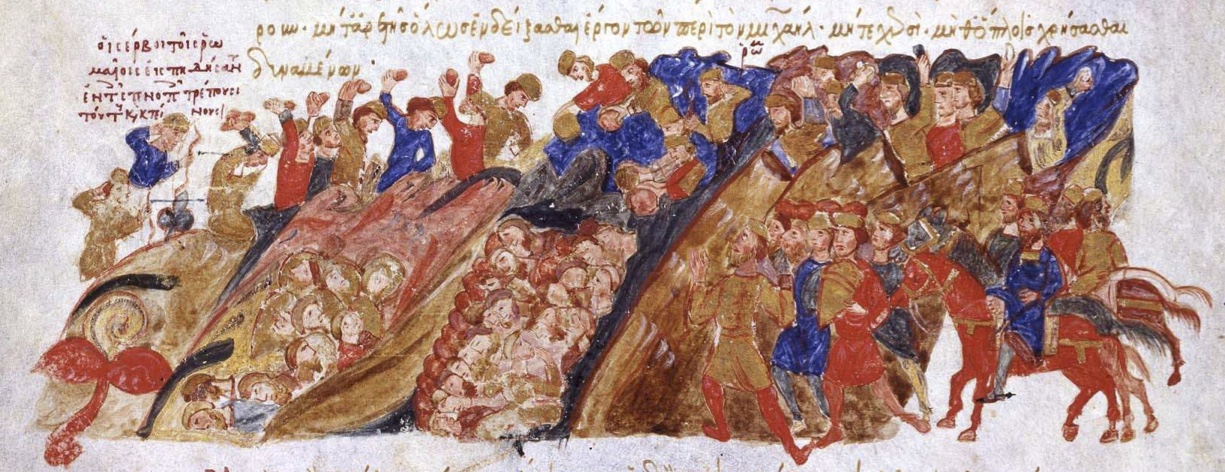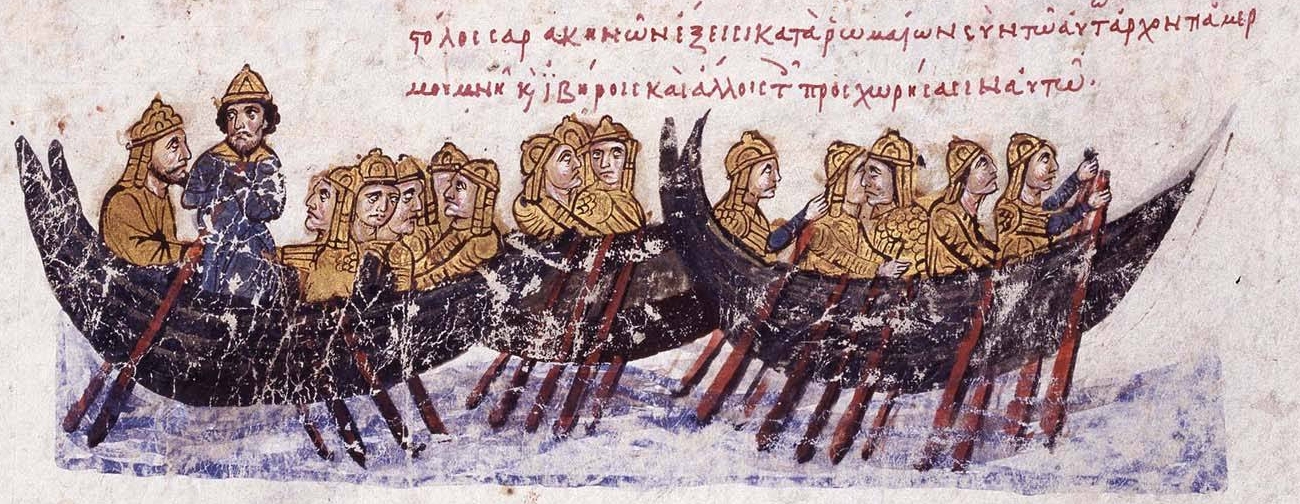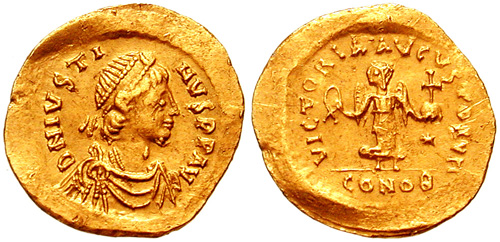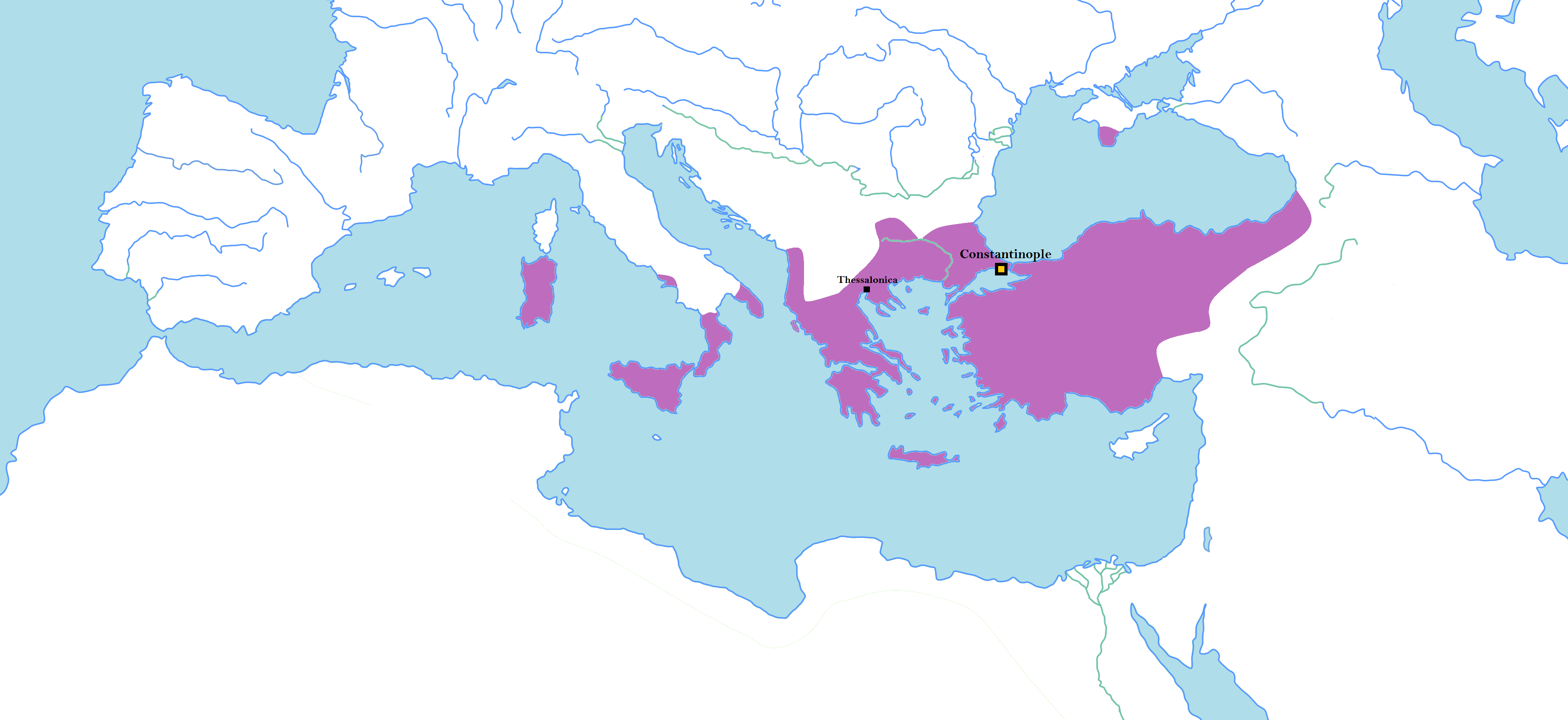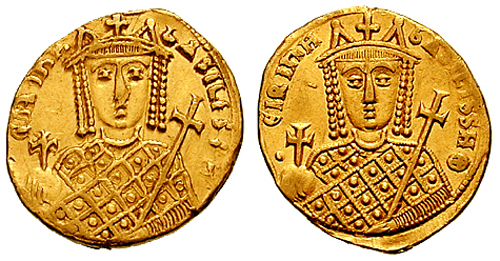|
Michael II The Amorian
Michael II ( gr, Μιχαὴλ, , translit=Michaēl; 770–829), called the Amorian ( gr, ὁ ἐξ Ἀμορίου, ho ex Amoríou) and the Stammerer (, ''ho Travlós'' or , ''ho Psellós''), reigned as Byzantine Emperor from 25 December 820 to his death on 2 October 829, the first ruler of the Amorian dynasty. Born in Amorium, Michael was a soldier, rising to high rank along with his colleague Leo V the Armenian ( 813–820). He helped Leo overthrow and take the place of Emperor Michael I Rangabe. However, after they fell out Leo sentenced Michael to death. Michael then masterminded a conspiracy which resulted in Leo's assassination at Christmas in 820. Immediately he faced the long revolt of Thomas the Slav, which almost cost him his throne and was not completely quelled until spring 824. The later years of his reign were marked by two major military disasters that had long-term effects: the beginning of the Muslim conquest of Sicily, and the loss of Crete to the Saracens. Do ... [...More Info...] [...Related Items...] OR: [Wikipedia] [Google] [Baidu] |
Madrid Skylitzes
The ''Madrid Skylitzes'' is a richly illustrated illuminated manuscript of the ''Synopsis of Histories'' ( el, Σύνοψις Ἱστοριῶν, ), by John Skylitzes, which covers the reigns of the Byzantine emperors from the death of Nicephorus I in 811 to the deposition of Michael VI Bringas, Michael VI in 1057. The manuscript was produced in Sicily in the 12th century, and is now at the Biblioteca Nacional de España in Madrid, with the shelfmark MS Graecus Vitr. 26–2. Other names for it are and . Apart from the very fragmentary 6th-century Alexandrian World Chronicle, it is the only surviving illustrated manuscript of a Greek chronicle, and includes 574 miniatures. It is unclear whether these illustrations are copies of earlier Byzantine images or were newly created specifically for this copy. Bibliography * Color facsimile edition by Militos (Μίλητος) Publishers, . * Vasiliki Tsamakda, The Illustrated Chronicle of Ioannes Skylitzes, Leiden 2002. * Bente Bj� ... [...More Info...] [...Related Items...] OR: [Wikipedia] [Google] [Baidu] |
Emirate Of Crete
The Emirate of Crete ( ar, إقريطش, Iqrīṭish or , ''Iqrīṭiya''; gr, Κρήτη, Krētē) was an Islamic state that existed on the Mediterranean island of Crete from the late 820s to the reconquest of the island by the Byzantine Empire in 961. Although the emirate recognized the suzerainty of the Abbasid Caliphate and maintained close ties with Tulunid Egypt, it was ''de facto'' independent. A group of Andalusian exiles led by Abu Hafs Umar al-Iqritishi conquered Crete in either 824 or 827/828, and established an independent Islamic state. The Byzantines launched a campaign that took most of the island back in 842-43 under Theoktistos, but the reconquest was not completed and would soon be reversed. Later attempts by the Byzantine Empire to recover the island failed, and for the approximately 135 years of its existence, the emirate was one of the major foes of Byzantium. Crete commanded the sea lanes of the Eastern Mediterranean and functioned as a forward base and h ... [...More Info...] [...Related Items...] OR: [Wikipedia] [Google] [Baidu] |
Excubitors
The Excubitors ( la, excubitores or , , i.e. 'sentinels'; transcribed into Greek as , ) were founded in as an imperial guard unit by the Byzantine emperor Leo I the Thracian. The 300-strong force, originally recruited from among the warlike mountain tribe of the Isaurians, replaced the older as the main imperial bodyguard. The Excubitors remained an active military unit for the next two centuries, although, as imperial bodyguards, they did not often go on campaign. Their commander, the count of the Excubitors (, ), soon acquired great influence. Justin I was able to use this position to rise to the throne in 518, and henceforth the counts of the Excubitors were among the main political power-holders of their day; two more, Tiberius II Constantine and Maurice, rose to become emperors in the late 6th century. In the late 7th century, the Excubitors appear to have degenerated into a parade-ground formation, and fade from the record as a corps. Individual seals of office attest to ... [...More Info...] [...Related Items...] OR: [Wikipedia] [Google] [Baidu] |
Tagma (military)
The tagma ( el, τάγμα, ) is a military unit of battalion or regiment size, especially the elite regiments formed by Byzantine emperor Constantine V and comprising the central army of the Byzantine Empire in the 8th–11th centuries. History and role In its original sense, the term "tagma" (from the Greek τάσσειν, "to set in order") is attested from the 4th century and was used to refer to an infantry battalion of 200–400 men (also termed ''bandum'' or ''numerus'' in Latin, ''arithmos'' in Greek) in the contemporary East Roman army.Kazhdan (1991), p. 2007 In this sense, the term continues in use in the current Hellenic Armed Forces (''cf.'' Greek military ranks). Imperial guards, 8th–10th centuries In later usage, the term came to refer exclusively to the professional, standing troops, garrisoned in and around the capital of Constantinople.Bury (1911), p. 47 Most of them traced their origins to the Imperial guard units of the late antique Roman Empire. By the 7t ... [...More Info...] [...Related Items...] OR: [Wikipedia] [Google] [Baidu] |
Count Of The Tent
The Count of the Tent ( el, κόμης της κόρτης, ''komēs tēs kortēs'') was a Byzantine military-administrative office attested from the 8th to the early 12th centuries. History and functions The title derives from ''korte'', "tent". The emperor often had a Count of the Tent in his own, personal service, the most famous of whom was Michael the Amorian under Nikephoros I (r. 802–811). According to the 10th-century Emperor Constantine VII Porphyrogennetos, during Imperial campaigns through the provinces ( themes), the Imperial Count of the Tent and his subordinates, the ''kortinarioi'', were responsible for pitching the Imperial tent and assisting the Drungary of the Watch in keeping watch over the camp at night... The Count is also attested as an official attached to the staff of a ''strategos'', the military governor of a theme, in seals and documents from the 8th to the early 12th centuries; on seals, the province where he served is often denoted. The office's func ... [...More Info...] [...Related Items...] OR: [Wikipedia] [Google] [Baidu] |
Nikephoros I
Nikephoros I or Nicephorus I ( gr, Νικηφόρος; 750 – 26 July 811) was Byzantine emperor from 802 to 811. Having served Empress Irene as '' genikos logothetēs'', he subsequently ousted her from power and took the throne himself. In reference to his career before becoming emperor, he is sometimes surnamed "the Logothete" (ὁ Λογοθέτης) and "Genikos" or "Genicus" (ὁ Γενικός). Nikephoros pursued wars against the Arabs and Bulgarians, with mixed results; while invading Bulgaria he was defeated and killed at the Battle of Pliska. Background Sources outside the Byzantine context, including Michael the Syrian, al-Tabari, and Mas'udi, preserve the tradition that Nikephoros was of Ghassanid Arab origin. al-Tabari claims that he derived this information from Byzantine sources, but no surviving Byzantine chronicle makes explicit mention of the emperor's ethnic background. The modern scholar Paul Julius Alexander suggests that al-Tabari did transmit informat ... [...More Info...] [...Related Items...] OR: [Wikipedia] [Google] [Baidu] |
Bardanes Tourkos
Bardanes, nicknamed ''Tourkos'', "the Turk" ( gr, Βαρδάνης ὁ Τοῦρκος, Bardanēs ho Tourkos, ), was a Byzantine general of Armenian origin who launched an unsuccessful rebellion against Emperor Nikephoros I () in 803. Although a major supporter of Byzantine empress Irene of Athens (), soon after her overthrow he was appointed by Nikephoros as commander-in-chief of the Anatolian armies. From this position, he launched a revolt in July 803, probably in opposition to Nikephoros's economic and religious policies. His troops marched towards Constantinople, but failed to win popular support. At this point, some of his major supporters deserted him and, reluctant to engage the loyalist forces in battle, Bardanes gave up and chose to surrender himself. He retired as a monk to a monastery he had founded. There he was blinded, possibly on Nikephoros's orders. Origin and early career Nothing is known of the early life of Bardanes. He is usually regarded by modern scholars a ... [...More Info...] [...Related Items...] OR: [Wikipedia] [Google] [Baidu] |
Spatharios
The ''spatharii'' or ''spatharioi'' (singular: la, spatharius; el, σπαθάριος, literally "spatha-bearer") were a class of Late Roman imperial bodyguards in the court in Constantinople in the 5th–6th centuries, later becoming a purely honorary dignity in the Byzantine Empire. History Originally, the term was probably applied to both private and imperial bodyguards.. The original imperial ''spatharioi'' were probably or later became also the eunuch '' cubicularii'' (Greek: ''koubikoularioi''), members of the ''sacrum cubiculum'' (the imperial "sacred chamber") charged with military duties. They are attested from the reign of Emperor Theodosius II (r. 408–450), where the eunuch Chrysaphius held the post. The existence of the specific title of ''spatharokoubikoularios'' for eunuchs in 532 probably suggests the existence by then of other, non-eunuch, ''spatharioi'' in imperial service. The various generals and provincial governors also maintained military attendants calle ... [...More Info...] [...Related Items...] OR: [Wikipedia] [Google] [Baidu] |

